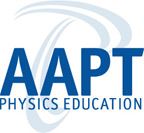- Home
- What We Do
- Laboratory Immersions
- Immersions 2020
- Imm2020CWU_OpAmps
Central Washington University – Ellensburg, Washington
Operational Amplifiers
Dates: July 30, 2020 to August 1, 2020
Number of setups available: 3
Maximum number of participants: 6
------------------------------------------------------------------------------------------------------------------------------------------
Operational amplifiers (op-amps), high gain differential amplifiers, are essential, versatile, typically inexpensive, analog integrated circuits. They are ubiquitous in electronic devices and scientific instrumentation, applied to perform a broad range of functional behaviors for these devices.
Students mastering op-amp concepts through either an “Electronics for Scientists” curriculum or as part of the advanced lab can better understand signals they encounter and work with in the laboratory, and even design and assemble circuits to address a broad range of signal conditioning needs in the laboratory.
Op-amps and op-amp circuits also comprise systems of intrinsic physical interest in the advanced lab, including the classes of op-amp circuits that function as highly accessible chaotic dynamical systems or models of biophysical feedback systems such as neurons. These classes of op-amp circuits are typically assembled from simple op-amp based sub-circuits that perform operations of addition, subtraction, integration, and differentiation allowing straightforward electronic realization of differential equations.
Primarily through hands on exercises tailored to their personal experience with operational amplifiers, participants in this Immersion will be introduced to: op-amps; analyzing, assembling, and measuring the properties of circuits that contain op-amps; and, important op-amp applications. Participants will design an op-amp realization of a damped simple harmonic oscillator using operational amplifiers, assemble it, measure its properties and behavior, and compare measured values to those predicted from an analysis of the op-amp circuit.
Next, in consultation with the Immersion mentor, participants will engage in one (or more, time permitting) of the following exercises: designing, assembling, and testing an op-amp based circuit to perform a specific complex laboratory function of their own choosing; assembling and performing measurements for an op-amp based chaotic dynamical system or model of a biophysical system; or, analyzing and performing measurements using modulation spectroscopy of the output impedance of op-amp circuits, demonstrating an important property of negative feedback systems.
Op-amp circuits will be assembled from discrete components on Proto-Board workstations, and measurements of the behavior of the circuits will be performed primarily with digital storage oscilloscopes. (For participants already proficient with LabVIEW and NI DAQ devices, those could be made available as an alternative means for performing some of the measurements.) Component values will be measured with a bench LCR meter. The apparatus for output impedance measurements employs higher quality power supplies than provided on the Proto-Board, and measurements are performed with a lock-in amplifier. Graphing and data analysis will be performed using Origin and/or Mathematica (MATLAB is also available, though it is not the mentor’s preferred software for graphing/data analysis).
Participants should bring a logbook and a USB “thumb drive” (essential for downloading and transferring data from oscilloscopes). Participants may want to bring their own laptop computer, particularly if they have preferred graphing/data analysis software other than that identified above.
The systems on which these experiments focus, assembled from inexpensive discrete electronic components, are, intrinsically, extremely low cost to implement, provided there is already access to general use electronic instrumentation. We have assembled a price list that includes specifically the general use instrumentation participants will use in this Immersion, though other models and brands (and thus prices) for the general use instrumentation would be perfectly suitable to carry out the experiments.
Mentors: Michael Braunstein
Prof. Braunstein has had primary responsibility for the CWU physics upper division electronics and advanced laboratory curriculum for more than twenty years and is an enthusiastic mentor of undergraduate research across a broad range of topics. He has benefited from participation in a number of ALPhA Immersions, ALPhA initiatives, and other physics advanced lab workshops.
Equipment list:
Online retailers of discrete electronics components: Digikey, Mouser, Newark, Allied Electronics.
10 each LM741 op-amps, DIP $10
10 each OP27 op-amps, DIP $50
Resistor, Capacitor, Inductor, Semiconductor device Assortments $200
22 gauge pvc-insulated tinned solid copper hookup wire assortment $50
Electronics hand tools $100
Global Specialties PB-503 Proto-Board workstation $500
10 each mini-grabber test leads $80
BK 889B bench LCR meter $1600
Tektronix MDO3024 Oscilloscope $5000
Fluke 287 multimeter $500
For the output impedance measurements only:
Keithley 2231A triple DC power supply $750
SRS SR530 Lock-in amplifier $2500





